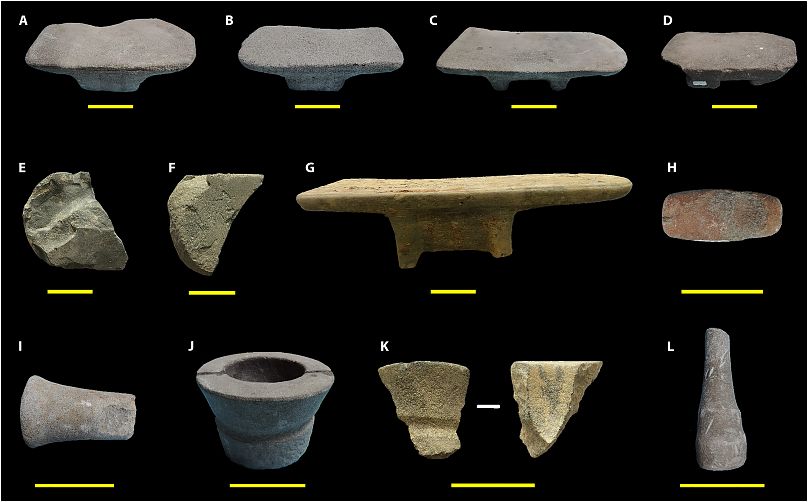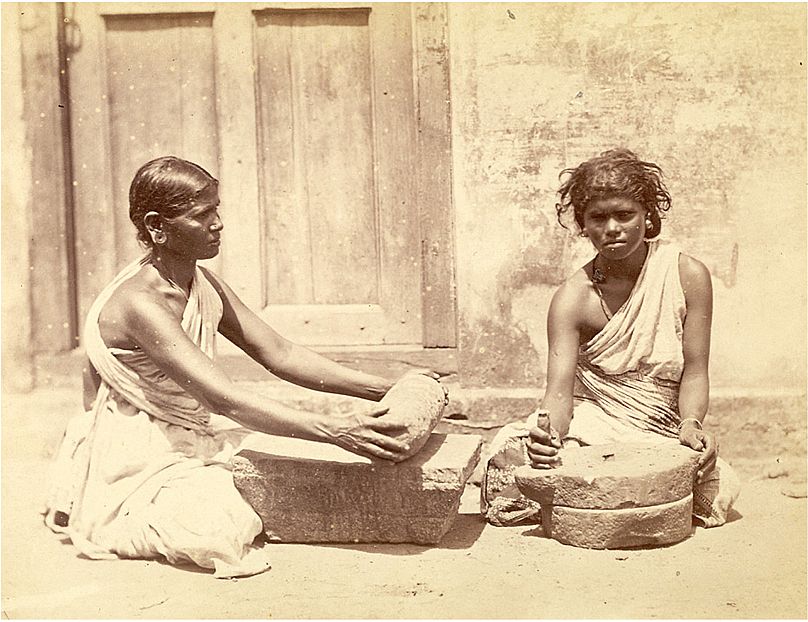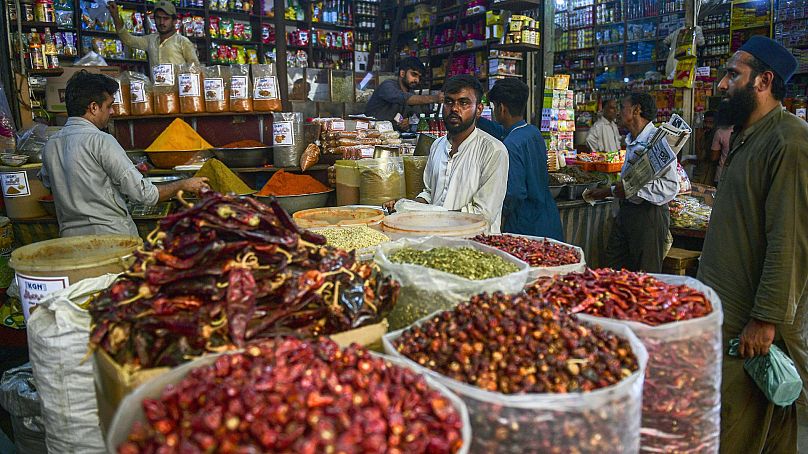The spices discovered on stone grinding tools, unearthed in Vietnam, date back to at least 1,800 years.
Archaeologists have recently revealed groundbreaking discovery that has rewritten the history of spice trade and culinary traditions in Southeast Asia.
The bustling region, spanning from India to Indonesia, has long been celebrated for its rich and diverse cuisine, featuring the beloved curries synonymous with the area.
Now, a new study published in Science Advances reveals that these vibrant dishes have an even deeper and more ancient origin than previously believed.
At the heart of this revelation lies the archaeological site of Óc Eo, located in present-day southern Vietnam, where researchers unearthed evidence of non-native spices dating back at least 1,800 years.
After analysis, cinnamon, native to Sri Lanka, and nutmeg, hailing from the distant Banda Islands in eastern Indonesia, were discovered in microscopic fragments integrated into 12 different sandstone grinding tools.
The team also unearthed traces of coconut, remnants of rice and some exceptionally well-preserved seeds.
"We suggest that South Asian migrants or visitors introduced this culinary tradition into Southeast Asia during the period of early trade contact via the Indian Ocean, commencing about 2000 years ago," reads the study.
The enduring legacy of spice trade in modern Southeast Asian cuisine
The significance of spices in history cannot be overstated.
They have acted as cultural bridges, connecting different civilisations and inspiring culinary traditions that have stood the test of time.
Since the Bronze Age, ancient South Asia emerged as a major source of spices, and evidence suggests that spices like turmeric, cinnamon, and black pepper were traded from South Asia to the Mediterranean around the second millennium BCE.
However, as historical records from China, Roman Europe, and India from the last centuries BCE and early centuries CE hinted at the existence of even more exotic spices originating from Southeast Asia.
The fascinating discovery at Óc Eo, a strategic trading entrepôt located at the head of the Mekong Delta, not only corroborates these historical accounts but also provides a tangible link to the past.
The research marks the first time we have concrete evidence that spices were highly valuable commodities exchanged on the global trading network almost 2,000 years ago and that curry also held wide appeal beyond India.
Furthermore, the study reveals an intriguing finding that the curry recipe used in Vietnam today has remained true to the ancient Oc Eo period. Key components such as turmeric, cloves, cinnamon, and coconut milk have consistently featured in the recipe.














